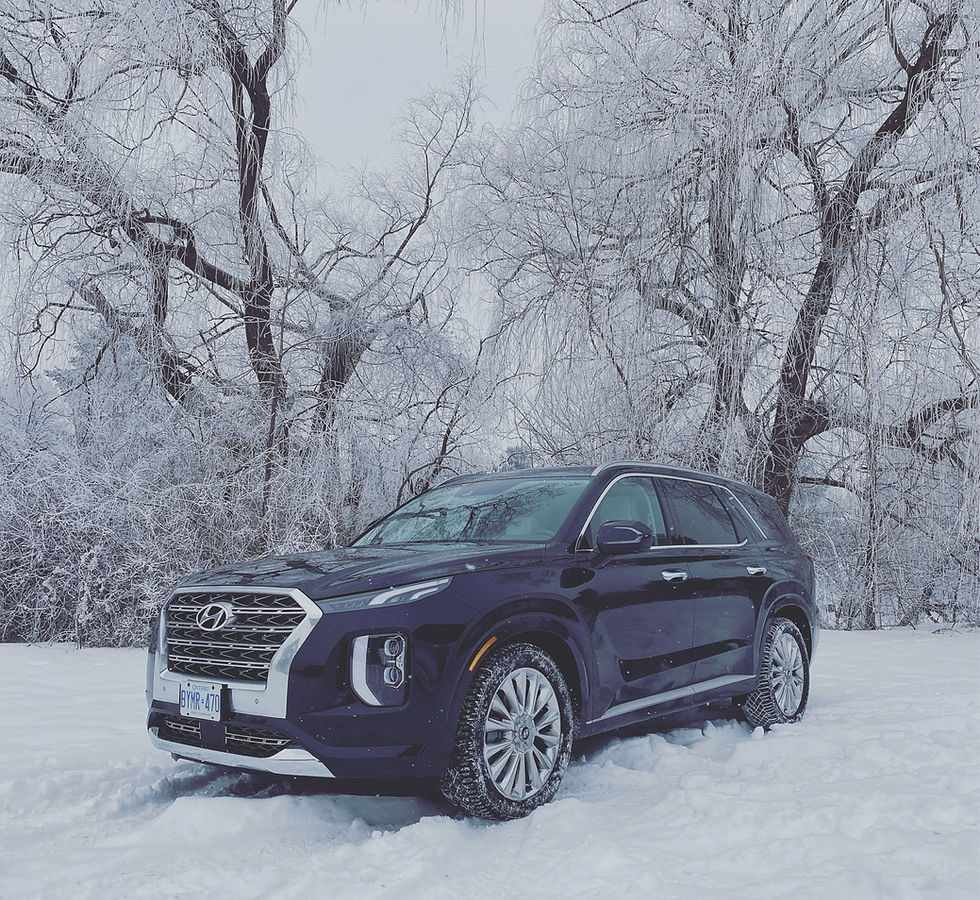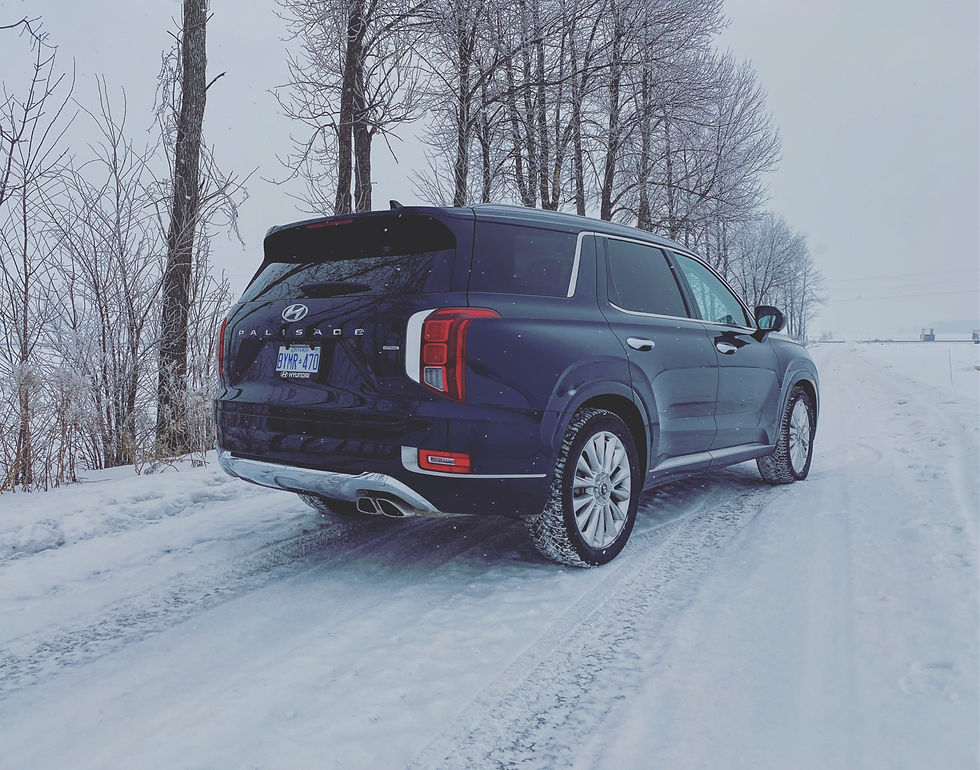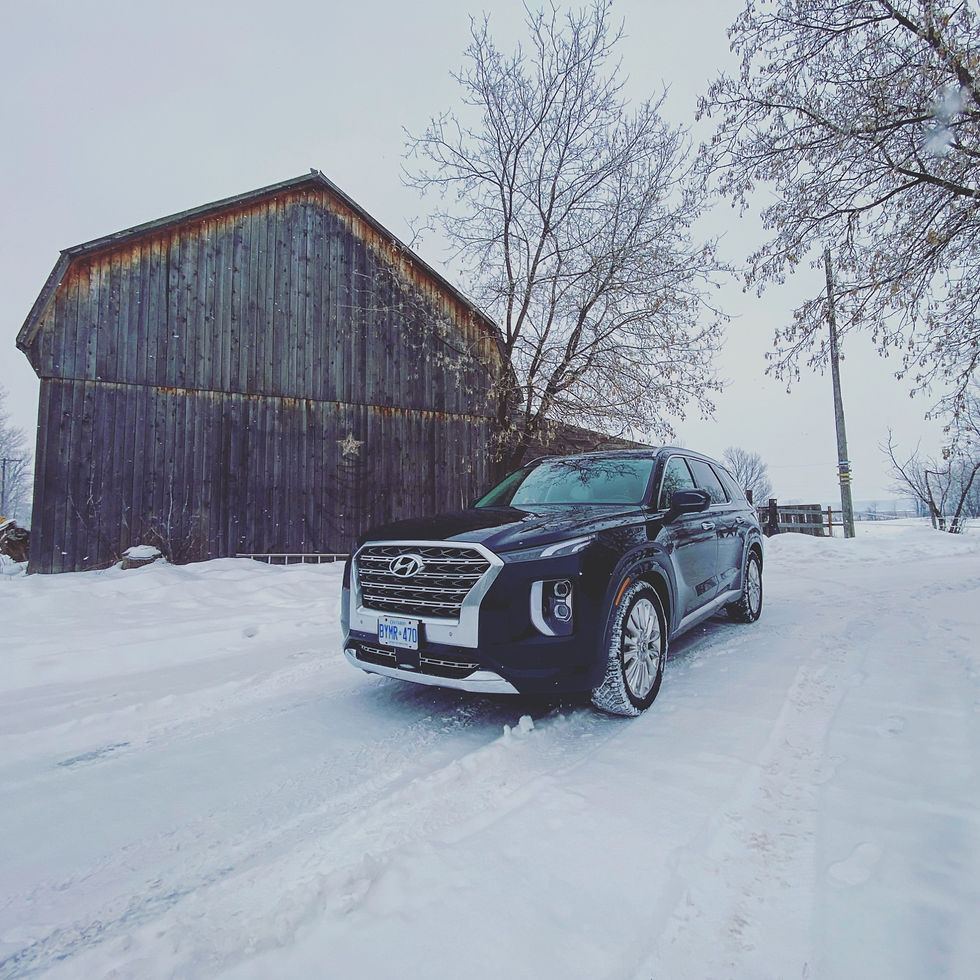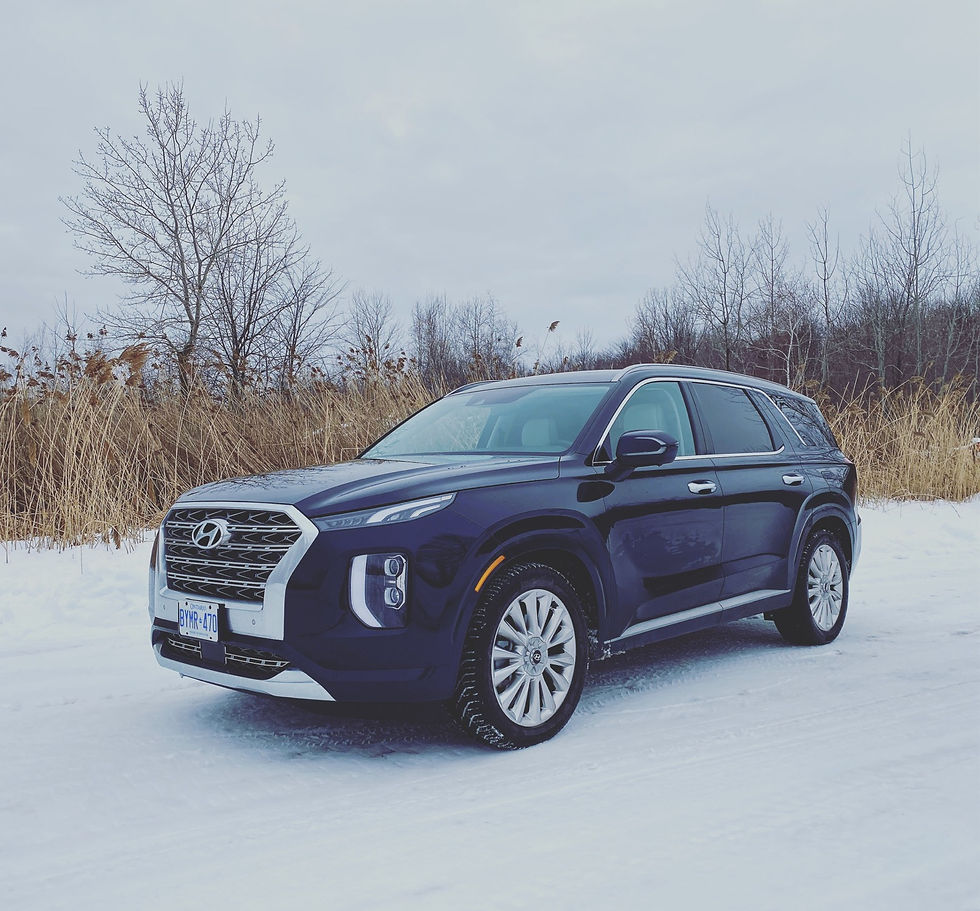2020 Hyundai Palisade
- Alain Kuhn Von Kuhnenfeld
- Apr 7, 2020
- 6 min read
This week we are reviewing the 2020 Hyundai Palisade in the Ultimate trim. Our vehicle was assembled at the Ulsan Plant in South Korea and has an MSRP of $54199.00 CAD.

Fun Factor: 6
Can it Family: 10
Fuel-Friendly: 7
HWY-warrior: 8
Karaoke-Friendly: 8
Baby-Friendly: 9
City Cruising: 7

As we prepared to test the Hyundai Palisade in Ultimate trim, we expected it would have a similar feel and driving experience as the KIA Telluride since they share the same platform and engine. The main difference between both is that the Palisade feels slightly less sporty; however, the ride is tuned to be more comfortable to give you a feeling of luxury. Here too, we have a vehicle that could easily be mistaken for a premium brand thanks to its sleek exterior and superior interior finishes, but Hyundai pushed it even further. The Palisade has a large 3.8L V6 that produces 291hp and 262 lb-ft of torque and uses a traditional 8-speed transmission, and still gave a decent fuel economy given the size of this SUV. In our real-life acceleration test, we've achieved 100km/h in 7.95 seconds. A tenth of a second slower than the Telluride, however, we tested the Palisade in the snow! The official numbers from Hyundai for the Palisade are 7.7 seconds to reach 100km/h for the AWD version and 7.8 for the FWD version. We are still surprised by how powerful the powertrain is and how agile the Palisade feels. The Palisade is one of our top 3 favourite three-row SUVs currently on the market.

The Palisade comes in 2 configurations, either as an 8-passenger or as a 7-passengers in the luxury trim. In our Ultimate version, the 7-passenger configuration comes standard. The front and 2nd row provide seating for 4 adults in extreme comfort, while the 3rd row is spacious enough also to seat adults. There are USB ports in all three rows so that everyone can charge their devices. Gaining access to the back seats is easy; you only need to click the button on the second-row seat. Our kids loved the Palisade so much they felt right at home, and we enjoyed being able to separate them when they started to be in each other's bubble. The front seats are heated and cooled, as well as the 2nd-row captains' chairs where it comes standard in the 7-passenger configuration. While these options are great, we found them to take a long time to heat up during our test. Passengers in the back can benefit from the hot air even on the cold days as a result of the Tri-zone automatic climate control. No doubt, with such a beautiful and functional interior, the Palisade becomes class-leading and starts to flirt with luxury brands at a fraction of the price. The driver's seat is laid out ergonomically to find the essential items directly on the steering wheel. Something we didn't like on the Telluride was the driver's perspective when it came time to look at the blind spots in the cluster; we thought it wasn't convenient. Overall, the visibility is better in the Palisade for 2 reasons; the rear design of the vehicle allows for better visibility of the blind spots. Secondly, while both offer live feed of the side of the vehicle around the gauge cluster, the view of the screen is better in the Palisade. The cabin is nicely lit, thanks to the panoramic roof and the grey headliner in our model. The trunk is generous with the 3rd row up; it will accommodate a stroller and a lot more. If you do need more space, all seats may fold down to give you a flat floor, allowing endless possibilities of items you can haul. Just by folding the 3rd row, we were able to fit a full miniature train set in the trunk, and as you can see in the picture still had space for other items. Something we really enjoyed was the "Rear Occupant Alert," which detects the presence of children and gives a visual and auditory warning, this feature may save lives.

The average fuel economy we observed was 12.2L per 100km during our test; on the HWY, we average 9.2L per 100km, and in the city, we average 14.8L per 100km. Hyundai announces the following fuel economy on the AWD version to be 12.3L per 100km in the city, 9.6L per 100km on the HWY and a combined result of 11.1L per 100km. If you don't need the AWD in the Essential trim, you can choose the FWD version with a slightly lower fuel economy. Announced is 11.9L per 100km in the city, 9.6L per 100km on the HWY and 11.1L per 100 combined. We conducted our test while exterior temperature oscillated between -2c and -20c and included a significant amount of snow falling. One might think that the HWY consumption would be higher in the Winter than in Summer, but reading back on our Telluride review, you will see that it's nearly the same.

How does the Palisade hold up on the HWY? The driving experience makes it a great choice for driving cross country. The engine is quite responsive, and there is no need to change into Sport Mode or ECO Mode, it found the right mode without hesitation. Seats are nicely bolstered for longer drives and give excellent lumbar support as well. Driving assistance features, such as Hyundai" Highway Driving Assist, "makes it a pleasant driving experience and is smart enough to disengage when weather conditions aren't safe. Most of the security features such as "Blind-spot collision-avoidance assist" come standard except in the Essential variant. The main inconvenience we saw inside the Palisade was the road noise coming inside the cabin.

The sound system found in the Luxury & Ultimate trim is the premium Harman Kardon sound system. It's a good system; it will play nearly any type of music without distortion even when you crank up the volume. Now going to the infotainment, it's a massive 10.25-inch screen offering both Apple Car Play & Android Auto. It's very responsive and simple to use; our only it was not possible to add a GPS location while driving. It's very responsive and simple to use; we'd only wish it'd be possible for the front passenger to add a GPS location while driving and that it would recognize better street names. The commands are uncluttered and laid out naturally so that all necessary features are within the driver's reach.

Installing child seats in the Palisade is user friendly, the door opens wide enough to get car seats into the vehicle. The LATCH ports are slightly hidden underneath the seats; in the 3rd row, the LATCH ports have their enclosing making it a lot easier to attach a car seat. Only one LATCH port is available for the 3rd-row seats. Since the 2nd-row seats can move forward and backwards, car seats installed in the 2nd row don't obstruct the way to the 3rd row. You may push the seat back to access the 3rd row. The height of the vehicle makes it more challenging for kids to open the door by themselves, and they'll also need assistance getting in and out of the car. The cooled and heated seat controls on the second row are nicely placed on the side of the door within reach of children and adults. The USB ports are installed on the side of the seats; children will have difficulty reaching them from there seats.

Finally, how did we manage with the Palisade in the city? It handles very well, and the camera makes it easy to fit in tighter parking spots. The 360-degree camera, the screen display and camera are of good quality. Different views are also available, giving a good all-around view from almost every angle. In the city, we wish that a mild hybrid system could help alleviate the initial delay in acceleration and, at the same time, reduce fuel consumption.

Why would we buy the 2020 Hyundai Palisade, or what we liked about it:
It's a real, functional 7-seater, easy to drive, lots of security features come standard, for its large sunroof, great value, more luxurious than the Telluride.

Why we wouldn't buy the 2020 Hyundai Palisade, or what we didn't like about it:
High fuel consumption in the city, challenging for young children to enter the car by themselves, for a car looking this luxurious, there shouldn't be that much road noise going into the cabin.

Comentarios